Ever since the Marriott–Starwood merger was completed in 2016, the combined hotel portfolio now boasts 30 distinct hotel brands encompassing their 7,000+ hotels around the world, most of which allow you to book free nights via the Marriott Bonvoy loyalty program.
Needless to say, the fact that there are 30 separate brands gives Bonvoy members a huge variety of hotels to choose from, and even I often find myself with a bad case of analysis paralysis when trying to decide on a place to stay along my travels.
In this post, I’ll break down the key characteristics, as well as my impressions and opinions, of these 30 brands to help you make the right decision on your next Marriott hotel.

In This Post
- How Marriott Breaks Down Their 30 Brands
- 1. Classic Luxury
- 2. Distinctive Luxury
- 3. Classic Premium
- 4. Distinctive Premium
- 5. Classic Select
- 6. Distinctive Select
- Conclusion
How Marriott Breaks Down Their 30 Brands
Marriott clearly recognizes that they’ve created a real untamed beast of a hotel chain, so they’ve taken some steps to clarify how their 30 hotel brands all fit within the overall portfolio by circulating a few infographics like this one:
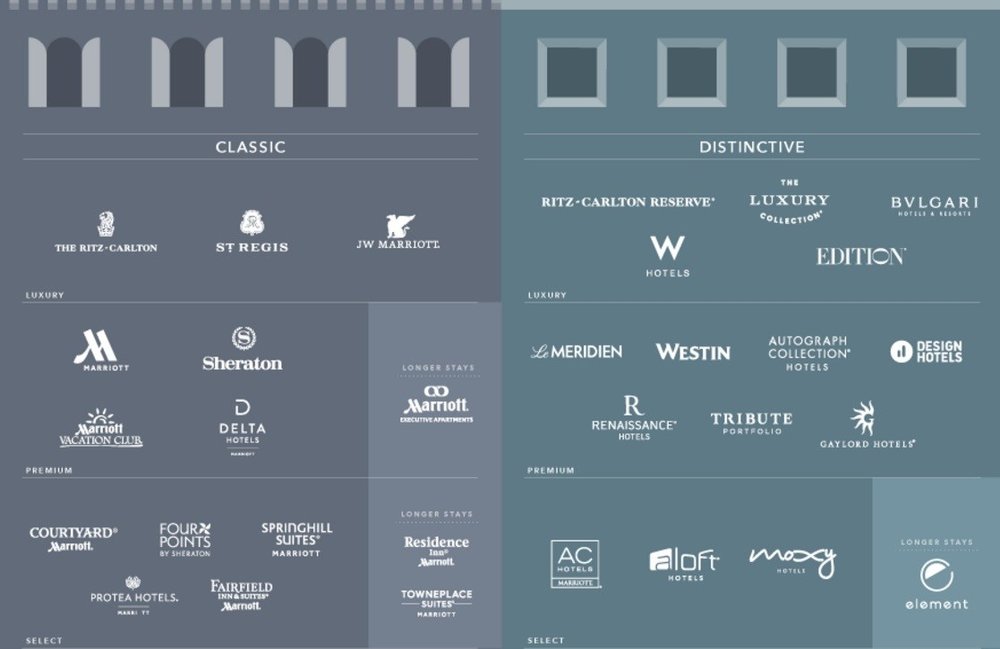
As you can see, Marriott uses three tiers: Luxury, Premium, and Select, stratifying the brands into top-tier, mid-range, and lower-end properties respectively.
(It’s funny how companies like to use the word “Select” as a code-word for “not as good as the rest”, isn’t it? I’m looking at you, Amex Membership Rewards…)
Within each tier, a further distinction is made between Classic and Distinctive brands – the former presumably representing old-school hospitality, hotel decor, and service principles, while the latter consisting of hotels with a more bespoke character. And then there’s another sub-division of Longer Stay hotels, which encompass brands that are geared towards the extended-stay traveller.
We may as well take Marriott’s nomenclature and run with it as we try to make sense of all 30 hotel brands. Meanwhile, the images I use in this article will indicate the properties I’d love to try next in each respective brand.
1. Classic Luxury
This category consists of what are probably my three favourite Marriott brands: Ritz-Carlton, St. Regis, and JW Marriott.
Ritz-Carltons are pretty much what you’d picture in your mind when you hear the words “classic luxury”. Expect dark wood panelling, soft and warm lighting, and aesthetically pleasing design that doesn’t really push the boundaries in any way. The staff’s service is generally impeccable, especially if you find yourself in a Ritz-Carlton Club Lounge, where you can expect nothing less than VIP treatment.
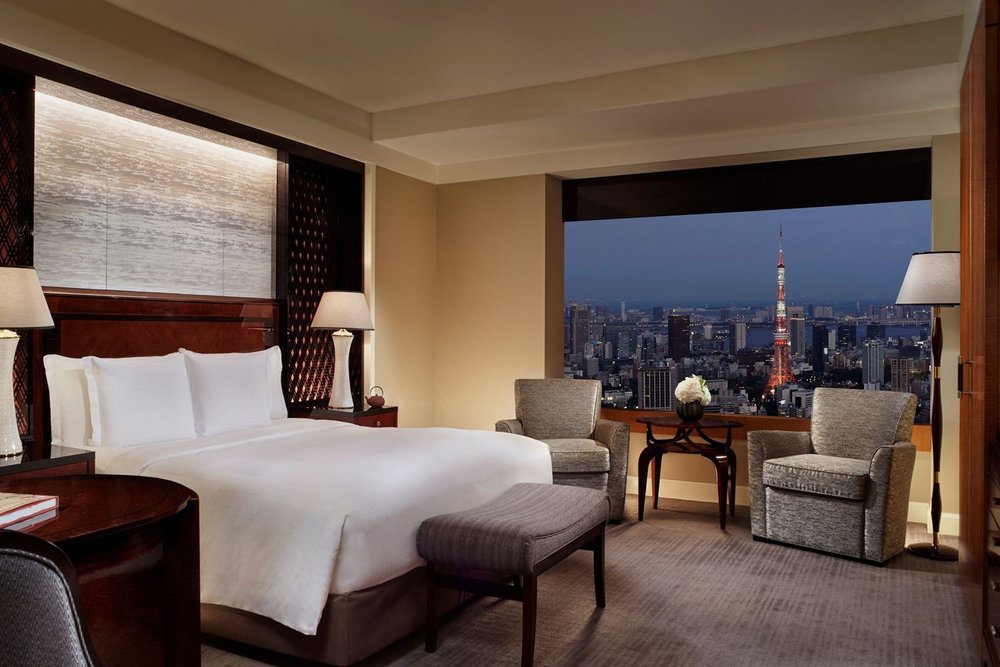
The Ritz-Carlton, Tokyo
Speaking of which, though, Ritz-Carltons are also some of the least generous hotels when it comes to Marriott Bonvoy elite benefits. They don’t offer free breakfast or lounge access to Platinum members and above, with only a few properties worldwide making an exception to this rule. Instead, in order to sample the best of a Ritz-Carlton hotel, you’re probably going to have to pay extra for it, even if you had redeemed points for your room.
For that reason, when given the choice between a Ritz-Carlton and a St. Regis, I most often choose the latter. St. Regises are comparatively much more ostentatious than Ritz-Carltons, strongly emphasizing that old-school grandiose luxury factor – think fancy chandeliers, ornate furniture, and vibrant shades of ruby and gold as the dominant colour theme.
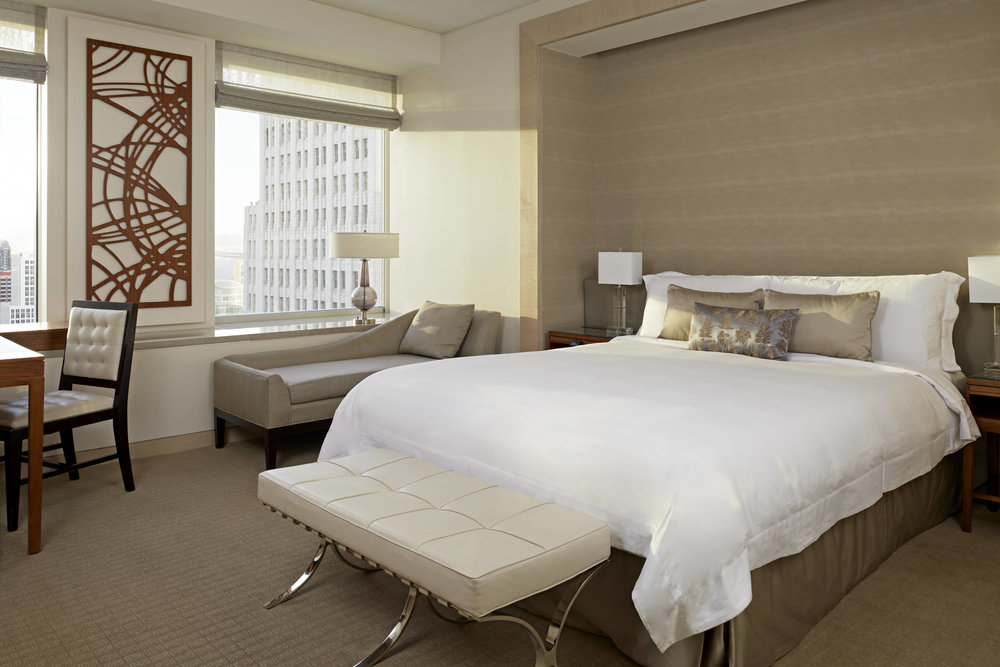
St. Regis San Francisco
While the winner between St. Regis and Ritz-Carlton comes down to your personal preference (and tends to be a hotly debated topic among Marriott Bonvoy enthusiasts), what’s undeniable is that St. Regises are much more generous with its benefits: breakfast is complimentary for Platinums and above (and it’s usually an extremely impressive breakfast spread); in addition, all members are treated to butler service, which usually includes complimentary 24/7 coffee and tea delivery, as well as garment pressing.
Ultimately, though, I have to say that my personal favourite Marriott hotel brand is the JW Marriott.
While the JW is ostensibly less luxurious than Ritz-Carltons and St. Regises, it’s a truly comfortable level of luxury in every sense of the word. Many JWs around the world have recently undergone renovations, so the rooms are generally spacious and modern.
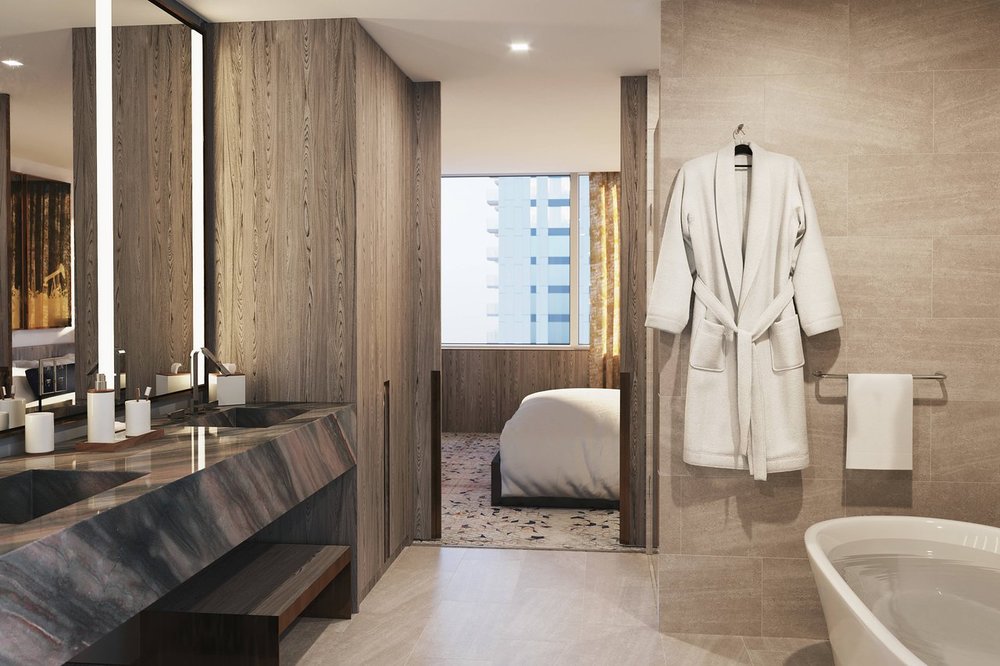
JW Marriott Edmonton ICE District
The hotel facilities also tend to be quite impressive, and almost every JW Marriott has an Executive Lounge for elite members (which most St. Regises lack and most Ritz-Carltons would charge you for), which makes for a wonderful spot to begin your morning and retreat at the end of the day.
Furthermore, JW Marriotts tend to be priced lower than the other two Classic Luxury brands, falling into Categories 5–7 while most Ritz-Carltons and St. Regises worth their salt are under Categories 6–8.
And not only that, but I’ve also found that some Ritz-Carltons and St. Regises have a certain “old boys’ club” aura about them, in which a particular type of decorum is expected among the staff and guests.
As a result, I tend to feel way more at ease in a JW Marriott, where I can saunter into the Executive Lounge in my shorts and flip-flops, than at a St. Regis where I sometimes feel like I must sip tea with my pinky pointing out, or risk attracting judgmental glares from the other guests.
Check out some of our reviews:
-
St. Regis: Moscow, Toronto, Bali, Istanbul, New York, Shenzhen, Astana
-
JW Marriott: Hong Kong, Bangkok, Rio de Janeiro, Seoul Dongdaemun Square, Vancouver, Singapore, Dubai, Edmonton, Cancún, Doha, New Orleans, Muskoka, Maldives (coming soon)
2. Distinctive Luxury
Within the Distinctive Luxury category, Ritz-Carlton Reserve and BVLGARI hotels do not participate in Marriott Bonvoy. So we’ll leave them aside for now, although their properties (like Mandapa in Ubud, Bali) certainly do look stunning, with a price level to match.
That leaves us with the Luxury Collection, the W, and EDITION hotels. Luxury Collection was one of my favourite brands within the old Starwood portfolio – these hotels are very well-appointed, delivering a luxurious experience while still retaining many elements of the local character that make the hotel unique. You can also expect a very high level of service, although it may not quite be at the level of some of the mainstays in the Classic Luxury category.
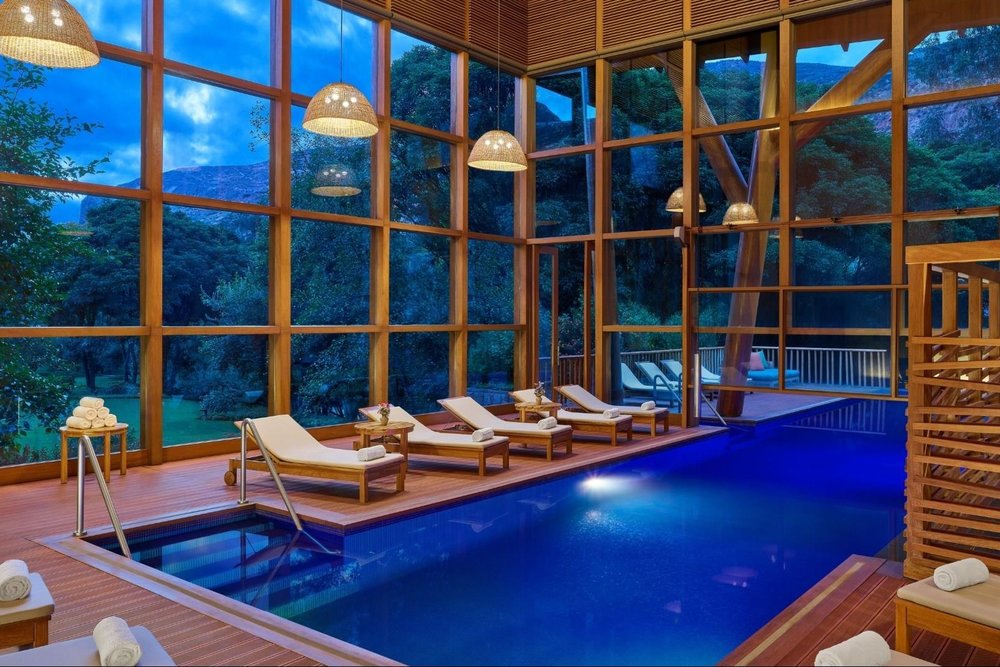
Tambo del Inka, a Luxury Collection Hotel, Sacred Valley, Peru
The fact that this is a “collection”, though, means that it’s going to be far less standardized than the other brands. Breakfast benefits will vary considerably from property to property, as will the smaller things like the bed quality and the toiletries provider.
You’ll find each Luxury Collection property to be different from the rest in some way, which may be a good thing or a bad thing depending on what you prefer.
W Hotels needs no introduction, does it? This hotel chain was made for Instagram: bright lights all over the place, snazzy designs featuring the letter “W”, and distinctive restaurants by some of the world’s top chefs.
At first glance, Ws are extravagant, over-the-top, and lots of fun indeed. But many guests feel that W Hotels are very much style over substance – after spending a little bit of time in your room, the initial wow-factor fades somewhat, and you start to find that having the bathtub in the middle of the bedroom isn’t necessarily the most intuitive setup.
While I very much relish the occasional W experience, I do think their hotels are best enjoyed in small doses.
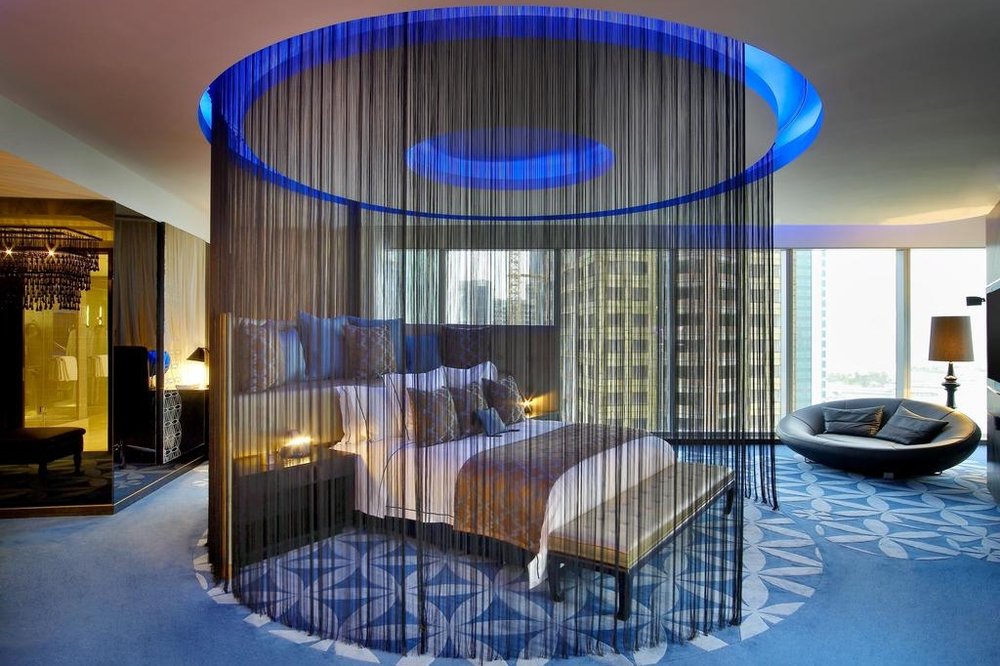
W Doha
In terms of points redemptions, both Luxury Collections and Ws tend to be reasonably priced for what you’re getting. There are also some real sweet spots to be had, like the Category 5 Andaman Langkawi and the Category 4 Ws in Bogotá, Istanbul, or Doha.
Lastly, I haven’t stayed at any EDITION hotels yet, but the brand strikes me very much as a bastion of understated refinement – a counterpoint to the St. Regis, if you will.
From what I’ve heard, the service at EDITIONs is particularly outstanding, so I do intend to try out one of their properties sometime soon, although they do seem to be marketed at a very high price range (both in points and cash).
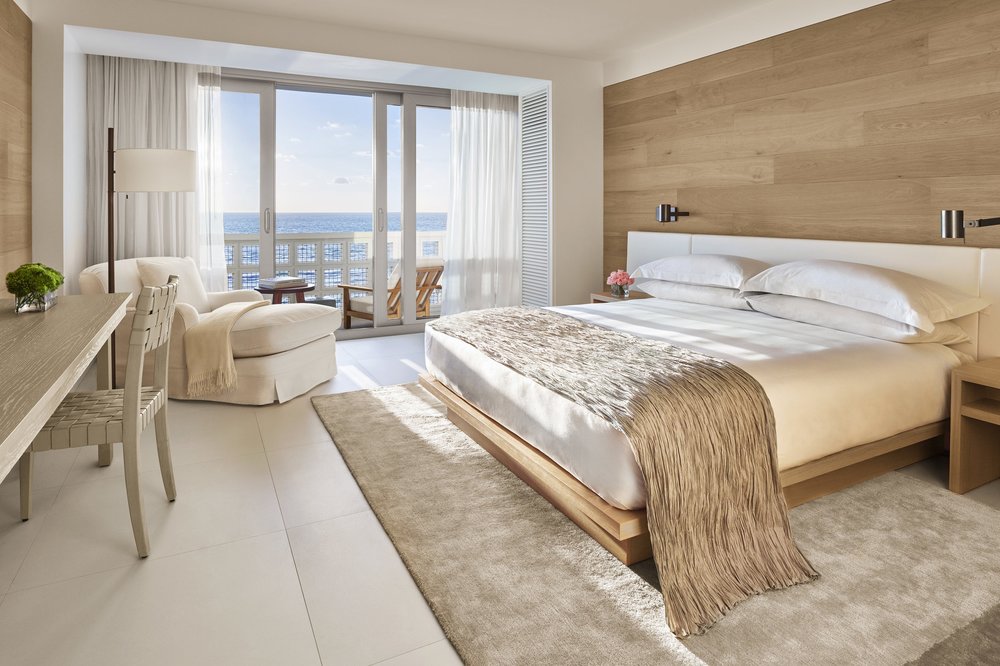
The Miami Beach EDITION
Check out some of our reviews:
-
Luxury Collection: Hotel Bristol Warsaw, Hôtel de Berri Paris, The Andaman Langkawi, Mystique Santorini, Al Maha Desert Resort Dubai,
3. Classic Premium
Now we get to the Premium category, where the brands start to blend together somewhat, and the differences, if they exist, become more subtle.
First off, Marriott Vacation Club is for timeshare owners, and Marriott Executive Apartments is for guests looking for serviced apartments. We’ll gloss over those and focus on Marriott, Sheraton, and Delta Hotels.
To tell you the truth, on average, these three brands will probably deliver the exact same level of enjoyment and experience if you stay at enough of their properties around the world.
Indeed, there’s very little in my mind to separate Marriott, Sheraton, and Delta, besides the visual factor – Marriotts tend to feature red, brown, and gold decor, while Sheratons and Deltas strike me as more silver and grey, I guess?
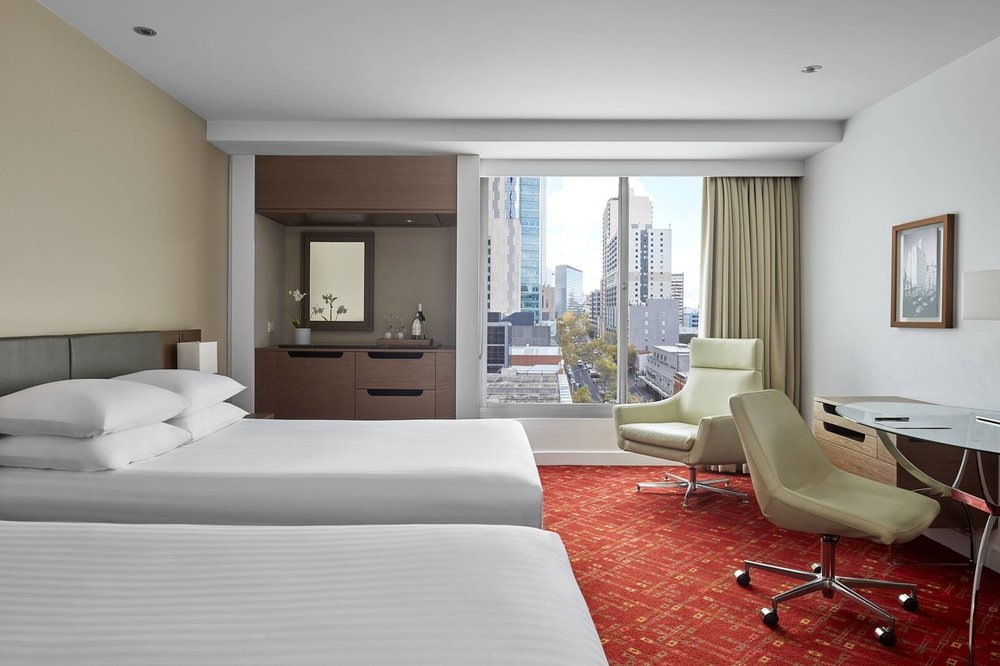
Marriott Melbourne
Hotels in all three chains tend to have an Executive Lounge, where elites can treat themselves to breakfast and evening snacks. Generally speaking, properties in Asia and the Middle East will deliver far more impressive lounge spreads (and breakfast spreads in the restaurant, should you choose to eat there) than those in Europe and North America.
All three are priced around the same range as well – Category 5 on average, but higher in popular cities. The other good thing about Marriotts and Sheratons is that you can count on them to show up in less-visited destinations: for example, Accra, Ghana and Novosibirsk, Russia aren’t really the right markets for a St. Regis or a W, but a Marriott makes perfect sense in catering to the average Western traveller.
In terms of personal preference, I’d probably rank Marriott slightly higher than Sheraton based on the properties I’ve stayed at in the past – though I imagine it could easily be the other way around if you’ve stayed at some better Sheratons than I have. I haven’t actually stayed with Delta Hotels yet, but I imagine it’s only a matter of time until I do, given their origin and strong presence in Canada.
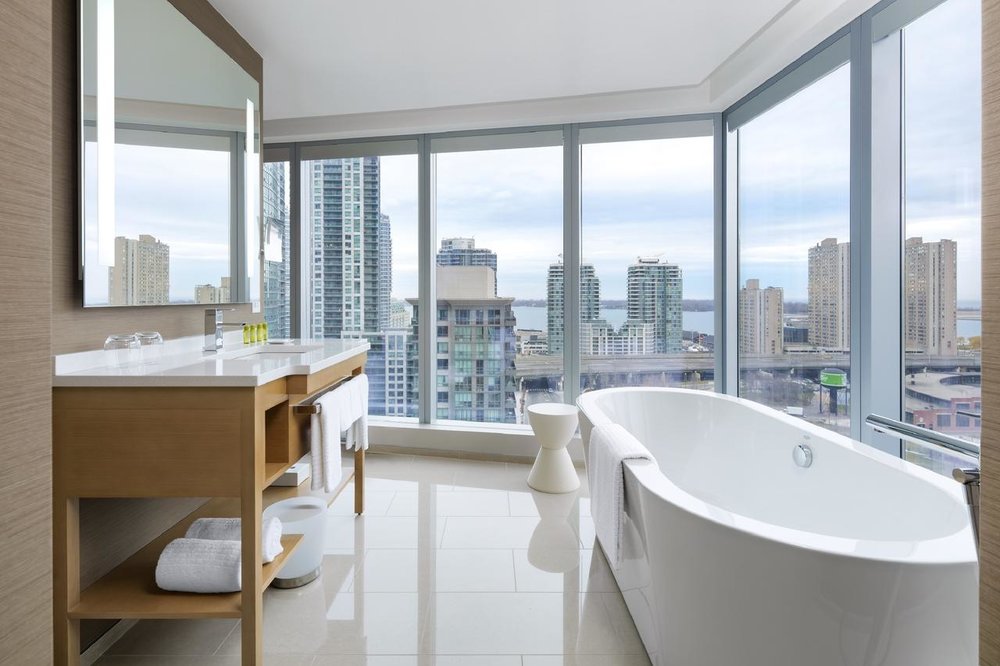
Delta Toronto
Check out some of our reviews:
-
Marriott: St. Kitts, Moscow Tverskaya, Novosibirsk, Portland, Accra, Petra, Wailea Beach Maui, Fiji Momi Bay
-
Sheraton: Seattle, Buenos Aires, Vancouver, Oman
- Delta: Montreal, St. John’s
4. Distinctive Premium
This category is even more crowded. Westin, Renaissance, Autograph Collection, and Le Méridien are the bigger brands that are most likely to show up in your hotel searches, whereas Design Hotels, Tribute Portfolio, and Gaylord Hotels have comparatively smaller footprints.
Broadly speaking, I like Westin, Renaissance, and Autograph Collection a lot, whereas I don’t like Le Méridien very much.
Westin hotels have a particular focus on health and wellness, and are known for piloting initiatives like free yoga lessons and sneaker rentals to ensure that their guests have a nourishing stay. I enjoy their design and service principles as well, and I almost feel just as comfortable at Westins as I do at JW Marriotts.
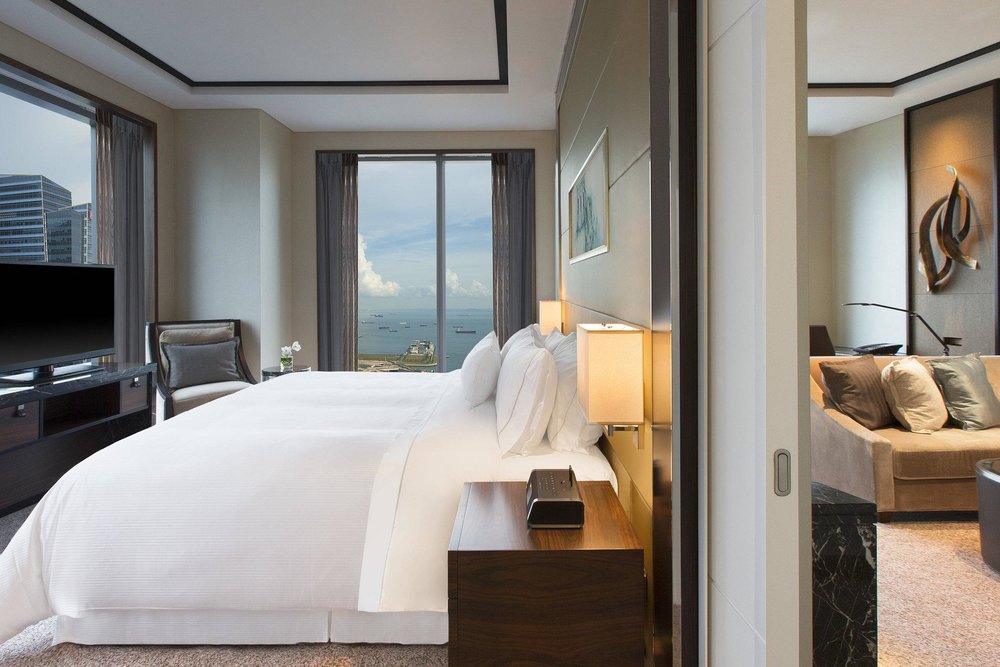
The Westin Singapore
Renaissance Hotels market themselves as a “lifestyle” brand, and their hotels tend to have a modern and quirky edge to them, while still retaining an upscale feel. Renaissance also happened to be my favourite hotel chain when I was growing up, long before I knew anything about hotel points, so that may also play a part in why I seek them out these days.
Autograph Collection can be thought of a less luxurious version of the Luxury Collection. The hotels continue to offer that exciting local charm, but usually at four-star rather than five-star prices and quality. The higher degree of variation also comes with the territory: for every masterfully decorated Hotel Telegraaf Tallinn, there also comes a duller, less inspired Prince Sakura Tower Tokyo.
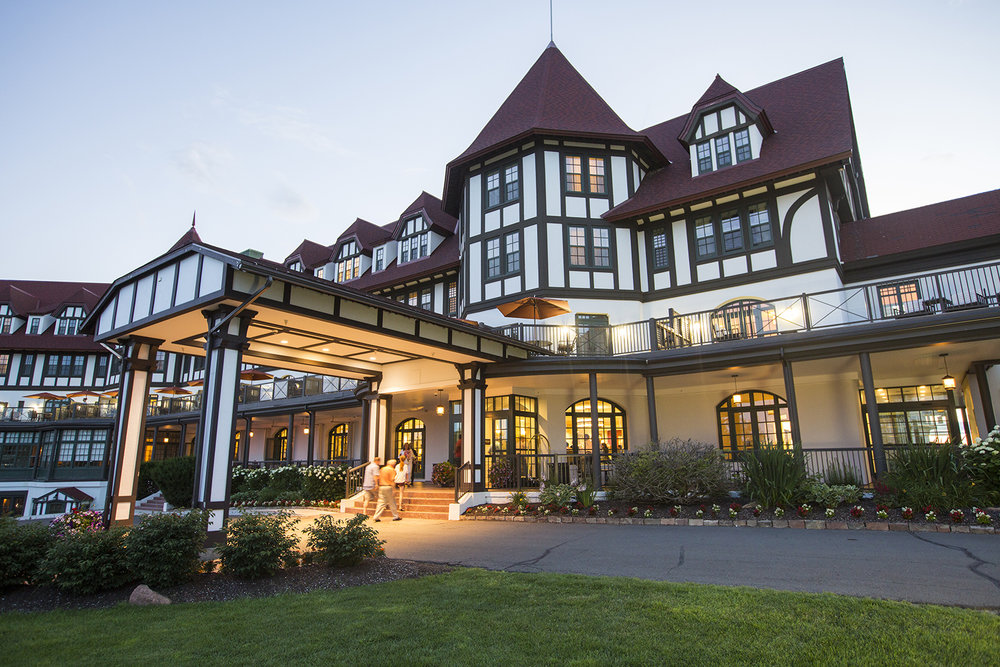
The Algonquin, St. Andrews-by-the-Sea, New Brunswick, an Autograph Collection Hotel
And then we have Le Méridien, which is my least favourite of the bunch. It’s not that I’ve found their hotels to be actively bad in any way, but rather the brand doesn’t strike me as having any sort of identity, and I don’t see what sets them apart from the rest in any way.
Oh, and both times I’ve stayed at a Le Méridien, I’ve found their beds to be quite uncomfortable – and when I could instead choose the Westin Heavenly bed or the Sheraton Sweet Sleeper, I don’t see why I’d give Le Méridien much of my business going forward.
All four of the above brands are generally redeemable at reasonable price points – think Category 4 or 5 worldwide, and Category 6 in major North American cities.
Meanwhile, Design Hotels aim to serve up a visual feast, whereas Tribute Portfolio is like the Luxury and Autograph Collections, but even more independent in spirit and character. The former doesn’t fully participate in Marriott Bonvoy elite benefits, while the latter only has a limited footprint of about 30 hotels worldwide, which is probably why I’ve yet to try either of them. Gaylord Hotels is limited to six properties in the United States, so I can’t say I’m likely to try them out anytime soon either.
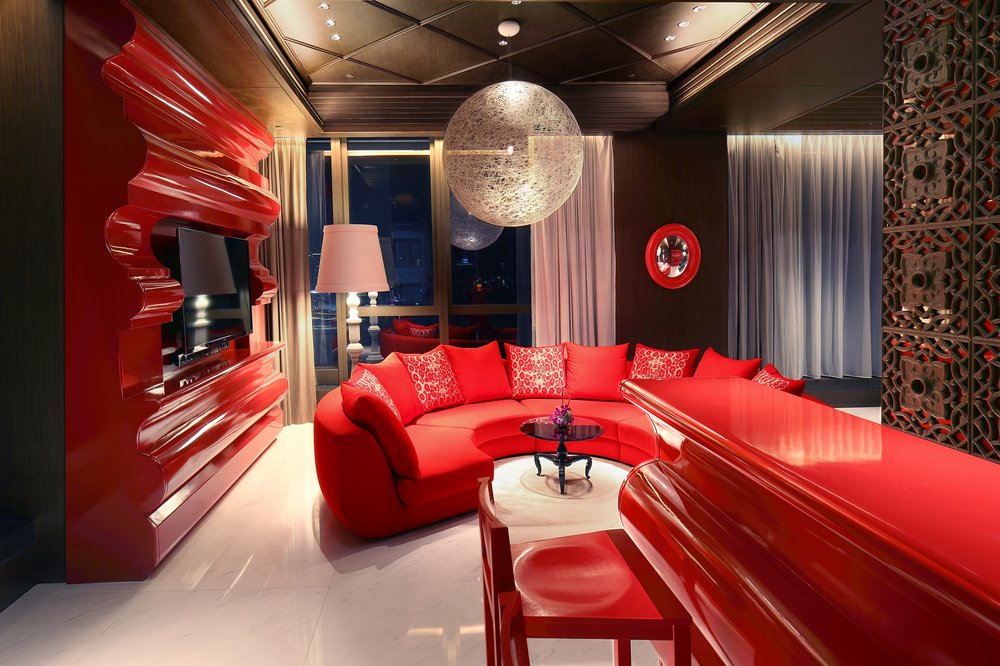
Mira Moon, a Member of Design Hotels, Hong Kong
Check out some of our reviews:
-
Westin: Perth, Halifax Nova Scotian
-
Renaissance: St. Petersburg, London, Montreal, Providence
-
Autograph Collection: The Prince Sakura Tower Tokyo, Hotel Telegraaf Tallinn, Kameha Grand Zurich
-
Le Méridien: Munich
5. Classic Select
The Select category is more about fulfilling your needs as a traveller for sleeping at night, rather than delivering too much in the way of a highly memorable hotel experience.
Standardization is the name of the game here – particularly with these “Classic Select” properties, where you almost always know exactly what you’re getting when you book.
I’d probably rank Four Points by Sheraton as the nicest of the bunch. They tend to be more modern than their other counterparts, and some of them even provide a nice à la carte or buffet breakfast for elite members. Taken together with their strong global footprint, I view Four Points as a solid cheaper alternative to the more upscale brands for those of you who want to stretch your Bonvoy points along even more trips.
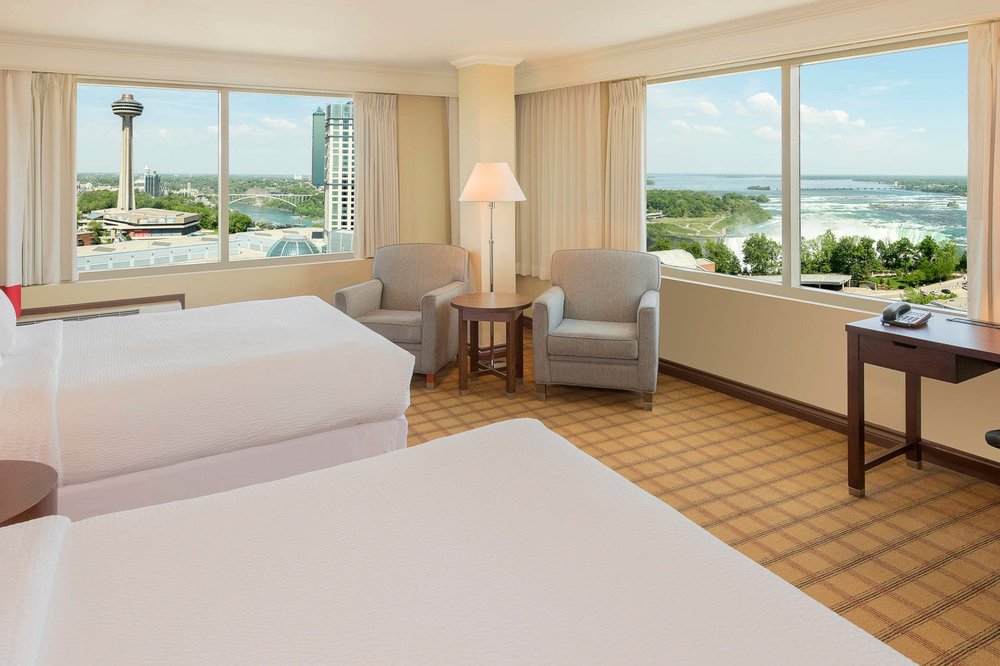
Four Points by Sheraton Niagara Falls
Courtyards and Residence Inns would come next. Courtyards tend to be a reliable no-frills option in bigger cities: cheaper price point, decent enough bed, but nothing more – not even breakfast, since they don’t always give breakfast to elite members.
Meanwhile, Residence Inns are built for extended stays, so they come with a small kitchenette and larger suites, as well as complimentary breakfast for all guests, making them ideally suited to a family vacation where convenience is valued higher than comfort.
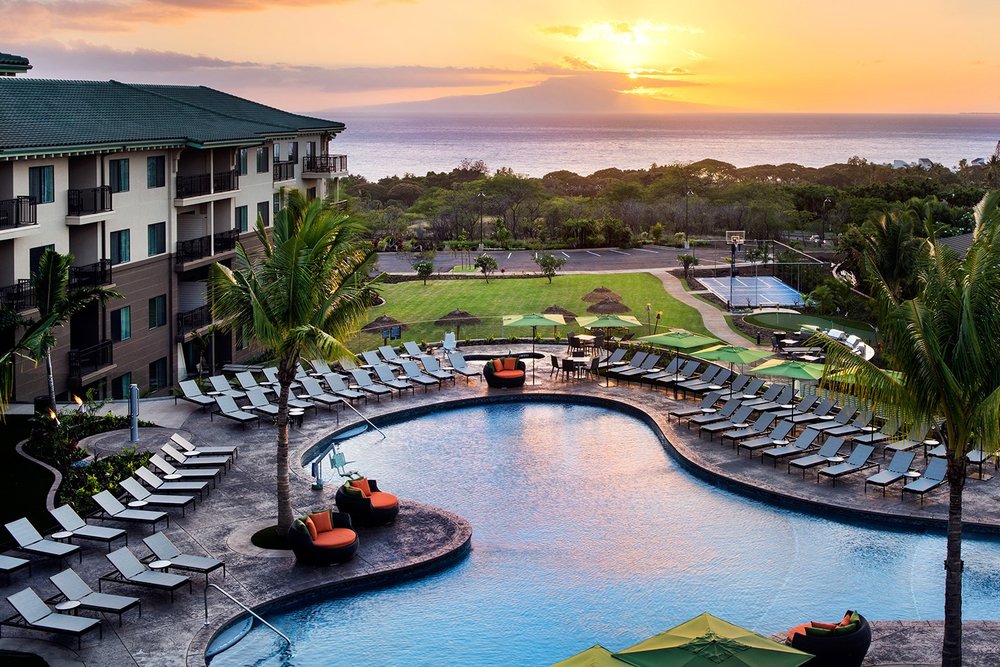
Residence Inn by Marriott Maui Wailea
There’s very little in my mind to separate SpringHill Suites, Fairfield Inn & Suites, and TownePlace Suites – indeed, there are some airports that have all three hotels nearby, charging the same price and clustered right next to each other. When I think of these brands, I visualize an airport hotel or roadside inn for a quick overnight stay, and that’s what I generally use them for.
Lastly, Protea Hotels is one of Marriott’s localized brands that mainly operates out of South Africa. Best I can tell, its hotels are appointed to about the same standard as a Four Points or a Courtyard, and marketed at a very low price point. Indeed, the best thing about all the hotels in the Select category is their affordability – they tend to fall into Categories 1 to 3 within Marriott Bonvoy, and their cash prices are lower to match as well.
Check out some of our reviews:
-
Four Points by Sheraton: Auckland
-
Courtyard: Phnom Penh, Tokyo Station
-
SpringHill Suites: Charlotte Airport
6. Distinctive Select
Finally, we have the Distinctive Select category, which contains four of the hotels that I probably give the least amount of thought to: AC Hotels, Element, Aloft, and Moxy.
AC Hotels is another localized chain (similar to Delta and Protea), which originated in Spain. There’s a Category 1–2 AC Hotel in pretty much every Spanish city or town, so they’d be ideally suited to an extended tour of Spain.
Other than that, their hotels around the world are generally boutique limited-service properties, roughly on par with Four Points by Sheratons, and can similarly be treated as budget alternatives to the more well-regarded brands in major cities.
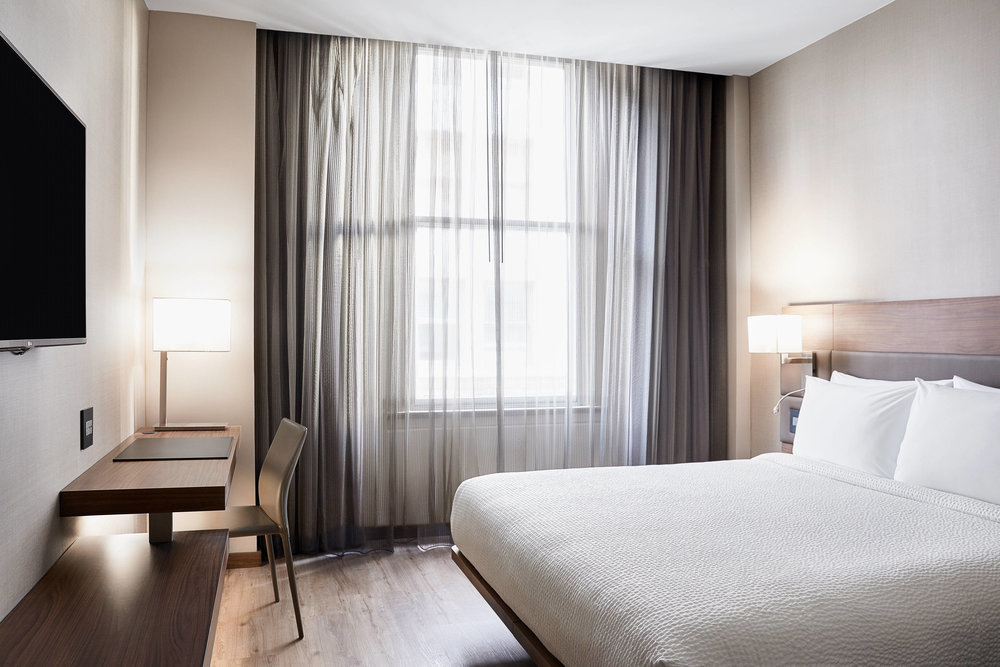
AC Hotels New Orleans Bourbon/French Quarter
Element Hotels are like Residence Inns in the sense that they’re designed for extended stays, but with more modern decor. They have larger guest suites with kitchenettes, spacious common areas and outdoor spaces, and well-equipped facilities like gyms and pools, all at an affordable price point. I haven’t stayed at an Element yet, but I’d love to try one someday when the circumstances are right.
Aloft Hotels is essentially a bargain-bin version of W Hotels. There’s the same colourful lighting, snazzy patterns, and emphasis on being a social butterfly, but none of the more luxurious stuff that you might find at a W. Only a very specific type of clientele (dare I say millennials?) might actively seek out Aloft Hotels, but their hotels are at least comfortable enough environments for staying a few nights if you’re on a budget.
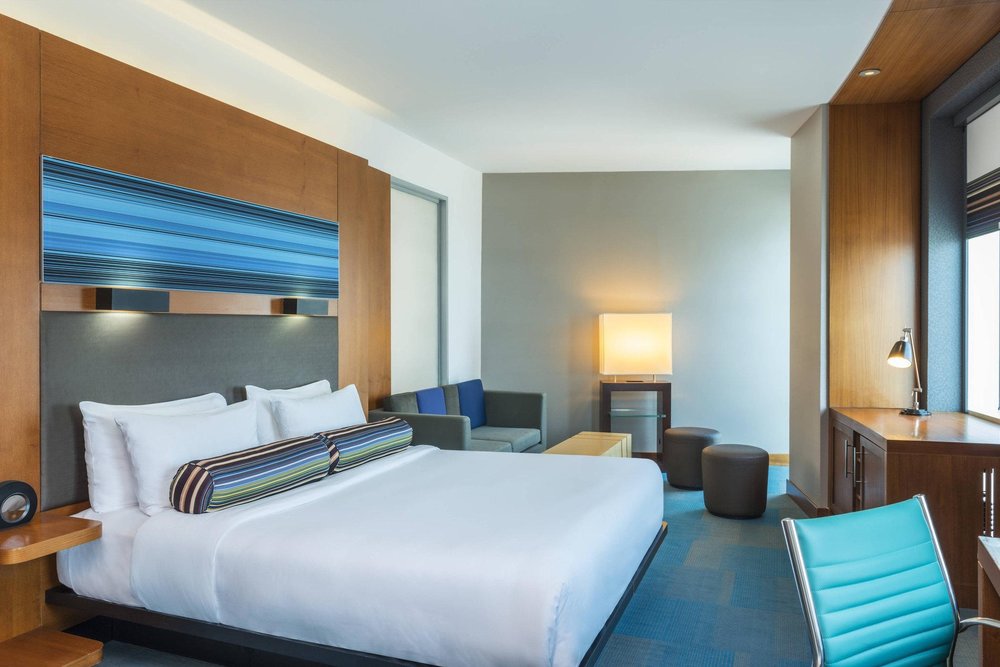
Aloft Abu Dhabi
Finally, we have Moxy, which is basically an even more millennial-oriented hotel brand than Aloft. Moxy’s lobbies are more reminiscent of a hostel than a hotel, and their rooms seem to be similarly bare-bones. Moreover, they’re the type of hotels to decorate every wall, surface, and keycard with “millennial speak” – even their hotel websites invite you to “kick back at this trendy chic spot” or something along those lines.
I think I’d genuinely hate myself for staying at a Moxy for more than a quick overnight, and I don’t intend to find out!
Check out some of our reviews:
-
Aloft: Montevideo
Conclusion
Marriott calls its unified portfolio an “unparalleled collection of brands”… and it really is unparalleled in terms of sheer complexity, that’s for sure. With 30 brands divided into six categories, Marriott Bonvoy members are spoilt for choice when it’s time to redeem their points – and that’s not always a good thing! This post aims to break down the differences among these brands and help you make a more informed decision when it’s time to pick a hotel.
Personally, these days I generally lean towards JW Marriotts and Luxury Collections for higher-end properties, Westins and Renaissances for mid-range stays, and Four Points by Sheratons for lower-cost hotels. And of course, I can’t deny I do enjoy treating myself to the occasional Ritz-Carlton and St. Regis as well. 😉



















Happy to add a comment. Marriott Bonvoy is a Utah thing, not so great in my opinion. I own a residence/condo. When I purchased the Residence Condo it was branded and managed by Starwood. The St. Regis brand under Marriot no longer lives up to the advertisement, white glove, butler etc. I am now seaching for something better than this, perhaps a 1031 exchange for a condo/residence that is not so tied into it’s point system. Something like the Four Seasons for example. With Marriott’s point system the losers end up being the propery owners.
I wish you could investigate how Sheraton Flex Vacation is making a mockery of being associated with Marriott Bonvoy and even using the Bonvoy credit card to further their business. See if you agree they sell to you as a Hotel Vacation Club and it’s really a Timeshare scam. Would be a good investigation story if you agreed. But only my opinion in my mind for getting taken
Hi Ricky,
I loved this post.
Like you, I never really gave Moxy or Aloft a second look because I’m pretty firmly in the JW / Marriott / Autograph / Renaissance/ Westin / Sheraton band.
I’ve recently found myself overnight at the Munich train station and then with a very short overnight layover at LHR. I stayed at Moxy & Aloft because I had some 25K certificates to burn. I was very pleasantly surprised. They aren’t properties I’d seek out, but I found them MUCH more comfortable than SH/FI/RI. Don’t rule them out!
Yeah, I’m open to an Aloft or Moxy stay (the former much more likely than the latter) if it’s the only practical option, or if it’s just a quick stay and I’d to have a room with a bit more character than a potentially bland Sheraton. That was the case in Montevideo where the Aloft and Sheraton are right next to each other, and the Aloft didn’t disappoint.
Nice comprehensive summary Ricky. Is there a resource that lists the perks per brand per status? I’ll be heading to Tambo Del Inca at the end of December and was wondering what type of perks (and what level of room upgrade) I could expect, as a Platinum.
Great overview.